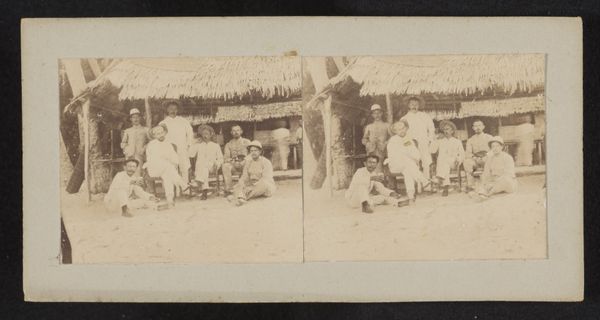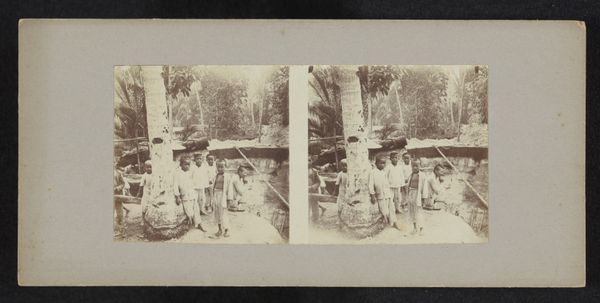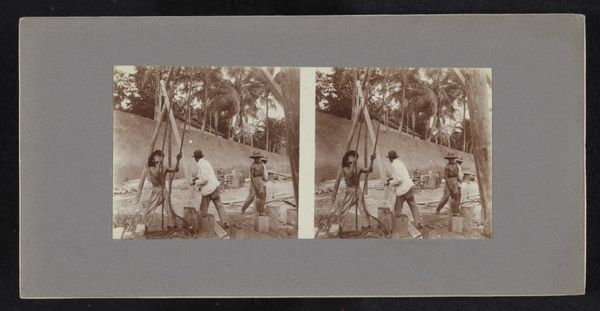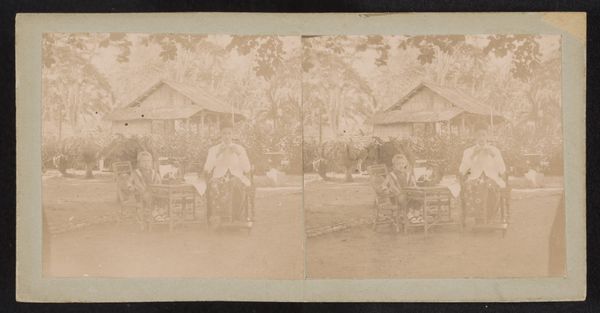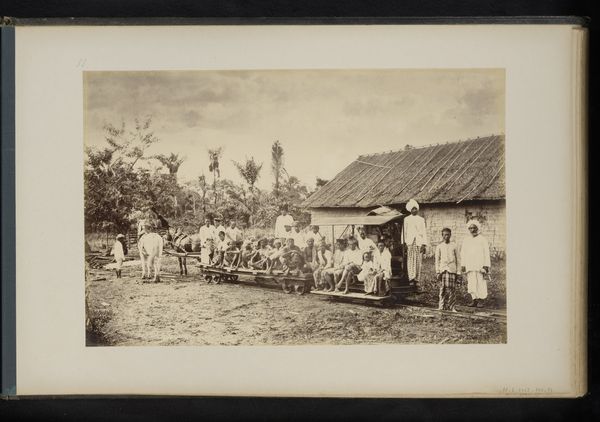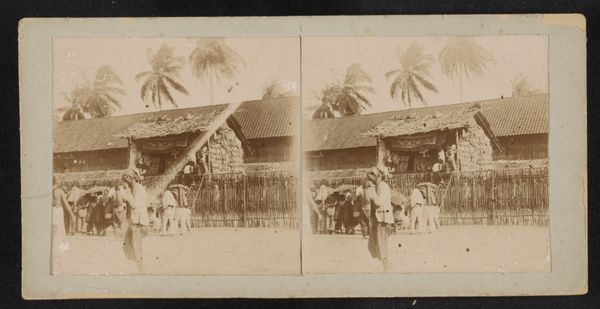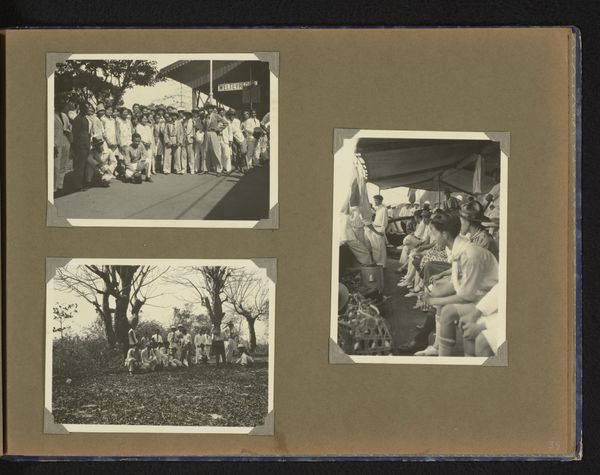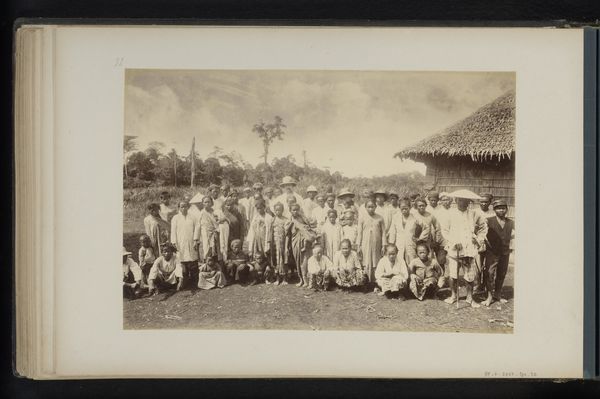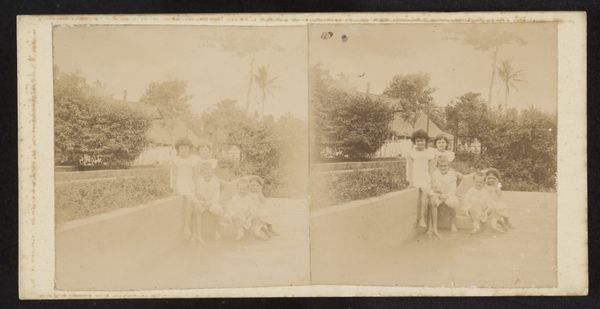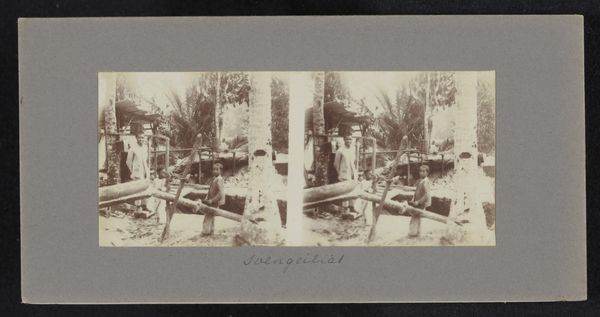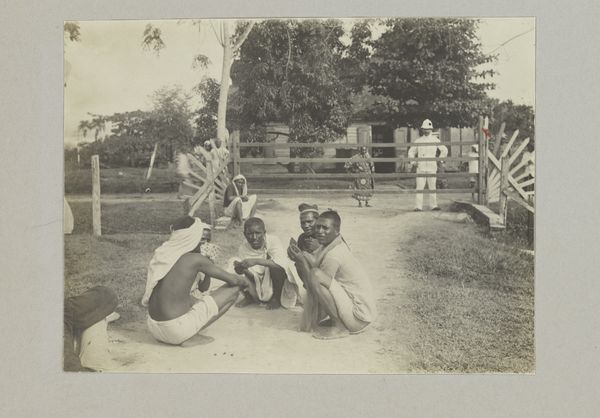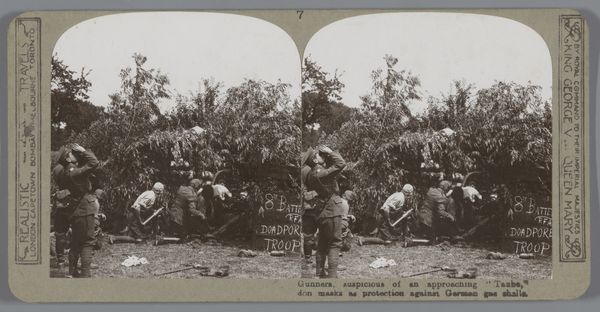
photography, gelatin-silver-print
#
portrait
#
african-art
#
aged paper
#
toned paper
#
light pencil work
#
sketch book
#
street-photography
#
photography
#
personal sketchbook
#
coloured pencil
#
group-portraits
#
gelatin-silver-print
#
sketchbook drawing
#
watercolour illustration
#
sketchbook art
#
watercolor
Dimensions: height 55 mm, width 60 mm, height 88 mm, width 178 mm
Copyright: Rijks Museum: Open Domain
Editor: Here we have Robert Julius Boers' "Jongens op straat," a gelatin-silver print from sometime between 1900 and 1922, housed in the Rijksmuseum. It’s… striking, the sepia tone gives it such a historical feel, almost like peering into a different world. What draws your eye when you look at this piece? Curator: The duplication, in effect a double image, is the immediate focal point. It’s presented like a stereoscopic card intended to create depth. Photography, particularly colonial photography, was used to construct and reinforce certain power dynamics. Do you think these young boys are presented in an objective light? Editor: That's interesting. It hadn't occurred to me that there would be this colonial layer to it. I was more focused on just how... candid the image felt. Objective? Maybe not entirely. They are positioned and grouped strategically. Curator: Precisely. Consider the setting: are these boys staged, or are they truly "on the street"? The way they’re positioned—some in cleaner white garments, others perhaps working or less adorned— hints at potential socio-economic implications carefully framed within the shot. Can photography truly capture candor when a power imbalance exists? Editor: I see what you mean. The deliberate nature of photographic portraiture, especially during this period, makes the idea of pure objectivity almost impossible. So this work isn’t necessarily just about boys on the street, but also about… how the Dutch colonial gaze might have perceived them? Curator: Exactly. This image can offer insights into Dutch colonial attitudes, its self-fashioning through visual representation, and the role of photography in creating and solidifying those narratives for a European audience. Editor: That is really fascinating; it’s more complex than I initially thought. It shows how images can both capture a moment and shape an idea about that moment simultaneously. Thanks! Curator: My pleasure. Hopefully, thinking about such images in terms of how power shapes their construction will influence how you view art going forward.
Comments
No comments
Be the first to comment and join the conversation on the ultimate creative platform.
